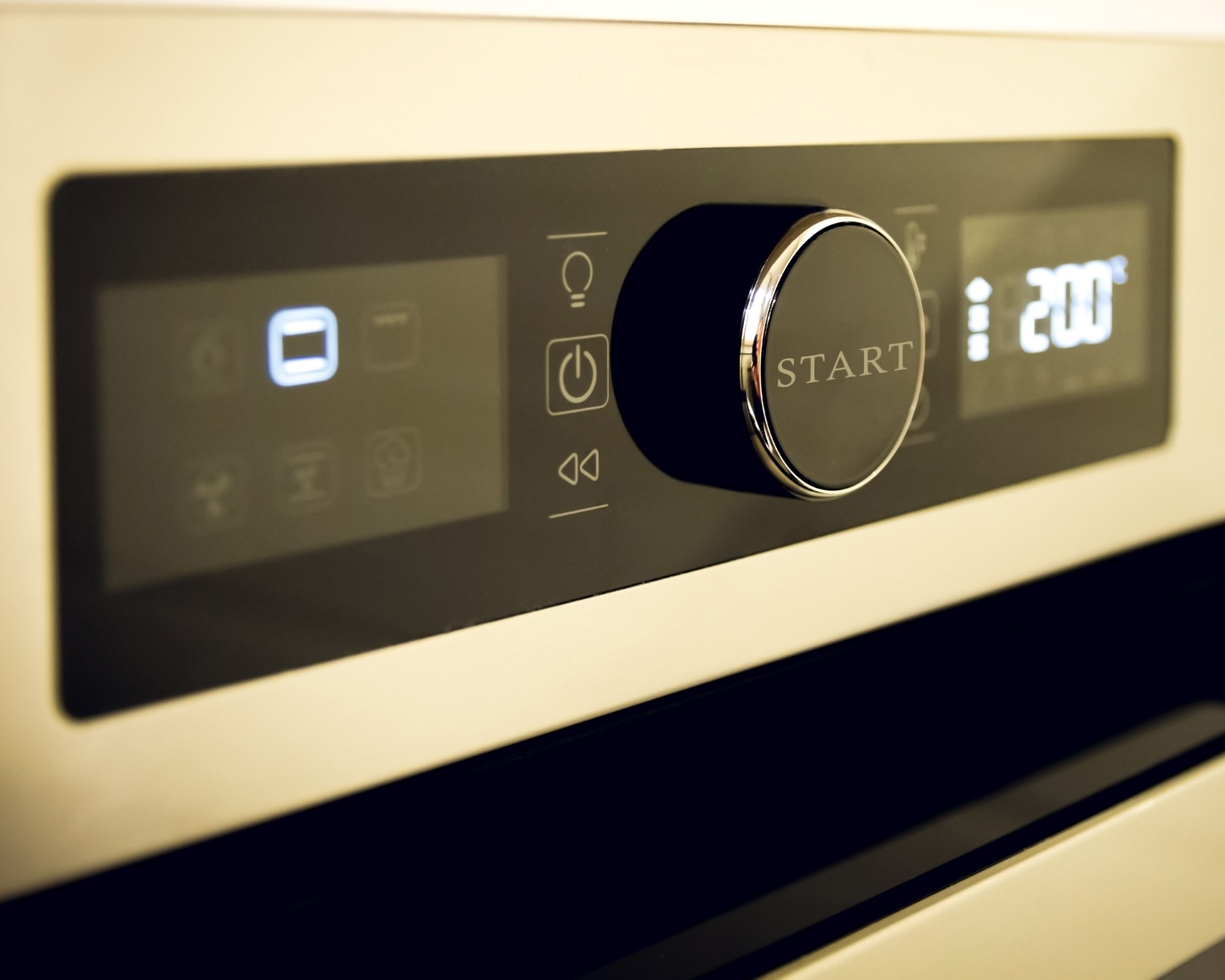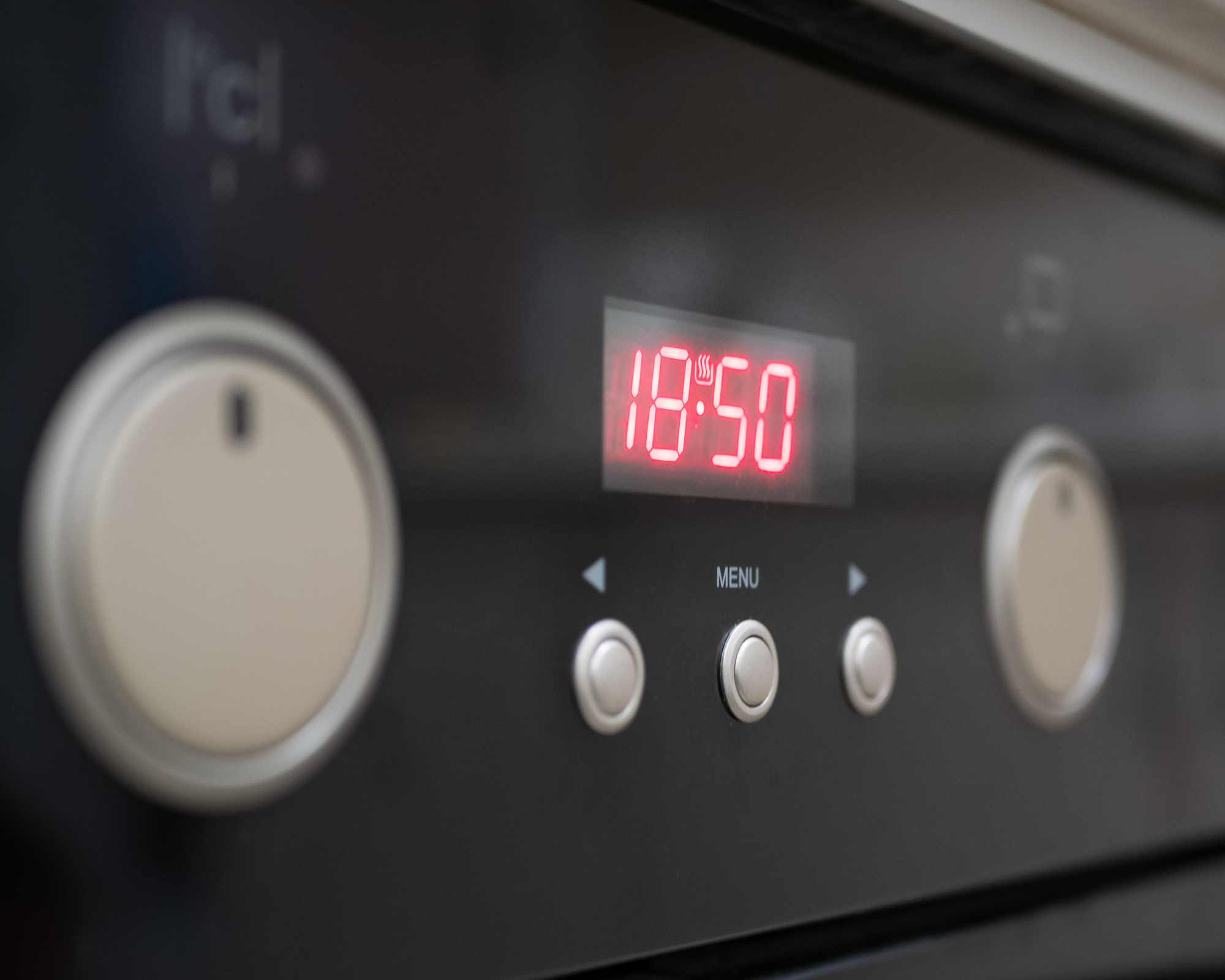How to set the clock on your oven – for Daylight Savings Time or after a power cut
Learn how to set an oven clock, no matter the make and model of your appliance

Want to know how to set an oven clock? If the clocks going forward have caught you unawares, we hear you. Because no one needs to change their oven clock that often, it's very easy to completely forget how to do it. Or you may have bought your oven only recently and have never done it before. Or maybe your house had a power cut and now the oven clock has reset and is just blinking ominous zeros?
Even the best ovens require you to reset the clock manually, and sometimes the process doesn't seem to be straightforward. Of course, reading the manual should give you the instructions you need, but if you can't find yours right now (no judgment: we lose manuals all the time), here's some general advice on how to (re)set your oven clock.
How to set an oven clock: step by step
First of all, it's important to stress that the exact way to set the oven clock on your oven will depend on the make and model of your oven. As Mark Smithson, CEO of electrical appliance experts, Marks Electrical, explains, 'Changing your oven's clock varies in difficulty depending on a few different factors; if your oven is older, there's a chance that its clock has been set by a mechanical device. If it is a newer model, then the chances are the clock is digital, but can still be a little tedious to set when the clocks change.'
Finding the manual – or even contacting the manufacturer – may be the best solution if you are really confused, but first try the following easy steps that will work for most oven makes.

1. Check if you have an analogue clock
Yes, some ovens still have analog clocks that are controlled by a manual dial. You will need to locate a knob that can be turned to set the time. 'Once located, you will need to work out if it is a simple turning mechanism to alter the time, or if you need to push and twist. Although using these clocks is straightforward, you need to be careful not to turn too far, or you will have to do a full 12 hours worth of turns to get back to where you started.'
Think of these as similar to the mechanical dial on your boiler or thermostat – or even a mechanical alarm clock.

2. How to set an alarm clock that's digital
Smithson advises that 'for those with a digital clock on their oven, there should be a button nearby with either 'clock' written on it, or an icon of a clock on it. The make and model of your oven will determine how you change the time on these.'
Get small space home decor ideas, celeb inspiration, DIY tips and more, straight to your inbox!
Some ovens have just three buttons, while others may have four or even six buttons. Fortunately, 'for most, if you hold down the clock button, the digits will either all turn to zero or will flash. Next, simply use the arrow or plus and minus buttons to select the correct time, finishing with a tap of the clock button to set it.'
If this isn't doing the trick, there may be a combination of buttons you need to press at the same time to be able to reset the clock. Typically, this will be the generic 'control' or 'cooking mode' button that you normally use to select your cooking program (often a hand or cooking pot symbol) and the clock button. Try holding them down at the same time for a couple of seconds and see if you're then able to set the time.
3. Smart oven? You may be able to set the time through an app
According to Smithson, 'some modern ovens now also come with a mobile app. For some, the time will automatically follow the time on your phone, so you don't have to worry about changing it. But others will require you to go into the settings on the app to alter the time.'
It should still be fairly easy resetting the clock on a smart oven. Once you're in the app settings, simply go the 'time' or 'clock' option to reset it.

How to set an oven clock after a power cut
If your oven clock is flashing and is showing all zeros, you likely have had a power cut. Resetting the clock in this case isn't just about having the oven display the right time – it won't work until you reset the clock, as it's essentially stuck in auto mode. A clock or hand symbol that is flashing red in the upper corner also indicates that automatic mode has been activated.
Now, locate the three buttons underneath the display. The middle button is always the control one, the buttons to the right and left will be for increasing or decreasing the time.
Press the middle button until the clock sign flashes on – now you can set the correct time using the left and right buttons. Press the middle button again to lock in the time.
Why won't my oven clock turn on?
If all you are seeing is a blank screen, your power is likely still off. You'll need to check your fuse box, which is typically in or near your kitchen or hallway. Take a good look at all the fuse controls – is one of them up when the rest are down? Try putting it in the same position as the other fuse controls. Your oven should now switch on and be ready for clock resetting.
If your fuse blows again, then your oven is causing a power surge and likely has an electrical fault. You must call in the manufacturer and/or registered electrician to determine what the problem is.
Why does my oven clock keep resetting itself?
If your oven seems to work ok but then you keep finding that the clock has reset itself is flashing, but there hasn't been a power cut, there may be a problem with the electrical circuit board of the oven or entire range cooker, which is ultimately what controls the clock. Again, will have to call out an engineer from the oven's manufacturing company to see if they need to replace the circuit board, or whether there's a different issue.
Anna is a professional writer with many years of experience. She has a passion for contemporary home decor and gardening. She covers a range of topics, from practical advice to interior and garden design.